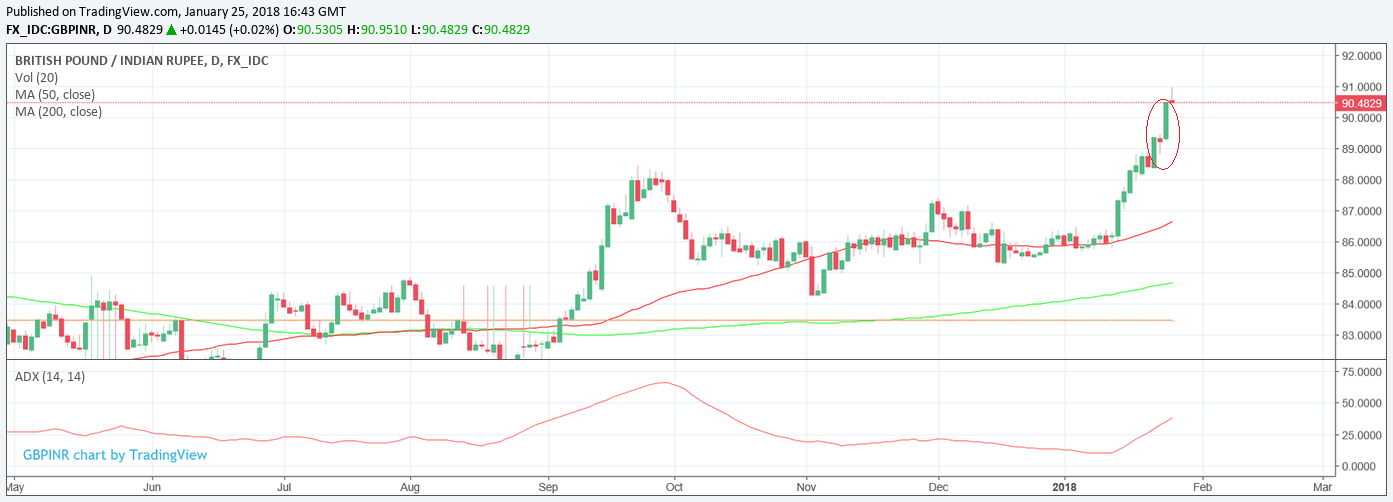Pound vs. Indian Ruppee: GBP/INR Hits Topside Target at 89.10, More Gains Possible

The Pound is rallying strongly versus the Rupee as we review the pair.
The Pound-to-Rupee exchange rate has hit the target set out in our most recent technical analysis at 89.10 and looks as though it wants to continue higher.
The pair, which had been oscillating in a triangle pattern over recent weeks broke out to the upside early in January and then rallied up straight through a band of resistance in the 88.00 level, hitting our target at 89.10.
Although the pair has formed a three bar continuation pattern (circled on the chart below) made up of a long up-day followed by a day with a small range and then another long up-day, the uptrend, as measured by the ADX indicator looks a little over-stretched.
The ADX should ideally be between 20 and 30 for an optimum continuation signal however it is at 38, suggesting the trend could be slightly overstretched.
Despite no strong continuation signal, the trend remains up and there is no sign that it is about to reverse.
We, therefore, see a continuation higher as probable, although would ideally wish to see a renewed break above the 90.95 highs for confirmation.
Such a move would probably continue up to the next round-number at 91.00 initially, and then 92.00.
Fundamental Drivers
The GBP/INR pair has been helped higher by a combination of easing Brexit concerns and strong unemployment data in the UK which has supported Sterling, and negative trade, budget and CPI data in India, which has weighed on the Rupee.
Morgan Stanley Strategist Hans Redeker says rising inflation, a deepening trade deficit due to rising oil prices - which account for a third of Indian imports - and a deepening budget deficit due to government spending are the three horseman of the apocalypse for the Rupee.
"Three events this week contributed to the current INR weakness. First, CPI exceeded expectations and is on an upward trend.
Second, the India trade deficit increased due to an unexpected drop in exports while imports inched upwards. Third, the India government has announced an additional INR 200bn, pushing the estimated deficit to 3.4% of GDP, above the budgeted target of 3.2%." Says Redeker.
History shows that when a country has both a trade and budget deficit - or 'twin deficit' as it is known - it is usually a bad sign for the currency.
The budget deficit will come under scrutiny on February 1 when the government tables its new budget.
According to DBS economist Radhika Rao the government is expected to steer a middle way between growth-orientated spending and budget-fixing cost cutting which, if anything will probably keep markets happy and be mildly positive for INR, if that is in fact what happens; though don't expect much volatility from this event as Budgets rarely move currency markets on the day they are delivered.
Get up to 5% more foreign exchange by using a specialist provider to get closer to the real market rate and avoid the gaping spreads charged by your bank when providing currency. Learn more here.







